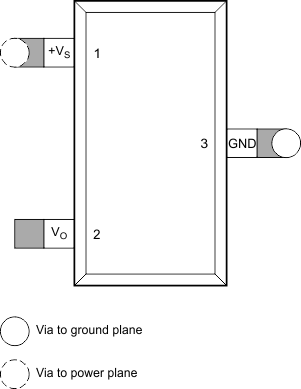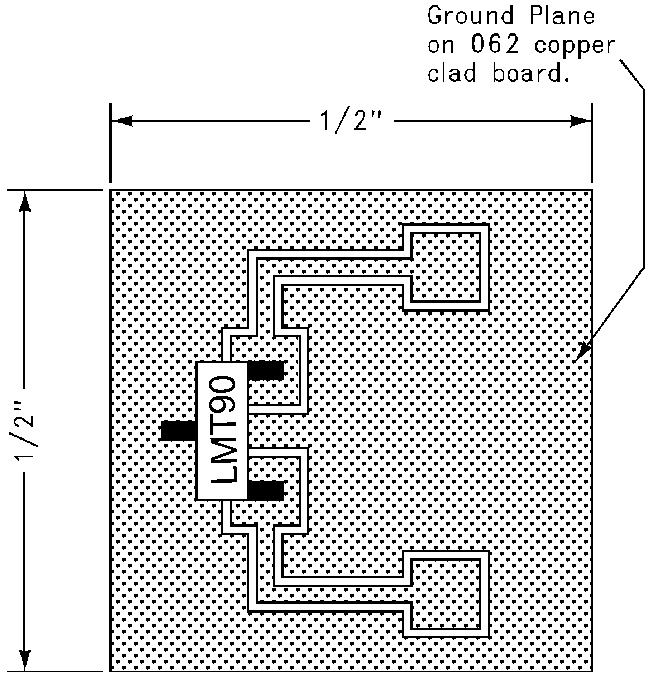SNIS177B March 2013 – September 2015 LMT90
PRODUCTION DATA.
- 1 Features
- 2 Applications
- 3 Description
- 4 Revision History
- 5 Pin Configuration and Functions
- 6 Specifications
- 7 Detailed Description
- 8 Application and Implementation
- 9 Power Supply Recommendations
- 10Layout
- 11Device and Documentation Support
- 12Mechanical, Packaging, and Orderable Information
Package Options
Mechanical Data (Package|Pins)
- DBZ|3
Thermal pad, mechanical data (Package|Pins)
Orderable Information
10 Layout
10.1 Layout Guidelines
The LMT90 can be applied easily in the same way as other integrated-circuit temperature sensors. It can be glued or cemented to a surface and its temperature will be within about 0.2°C of the surface temperature.
This presumes that the ambient air temperature is almost the same as the surface temperature; if the air temperature were much higher or lower than the surface temperature, the actual temperature of the LMT90 die would be at an intermediate temperature between the surface temperature and the air temperature.
To ensure good thermal conductivity the backside of the LMT90 die is directly attached to the GND pin. The lands and traces to the LMT90 will, of course, be part of the printed-circuit-board, which is the object whose temperature is being measured. These printed-circuit-board lands and traces will not cause the LMT90 temperature to deviate from the desired temperature.
Alternatively, the LMT90 can be mounted inside a sealed-end metal tube, and can then be dipped into a bath or screwed into a threaded hole in a tank. As with any IC, the LMT90 and accompanying wiring and circuits must be kept insulated and dry, to avoid leakage and corrosion. This is especially true if the circuit may operate at cold temperatures where condensation can occur. Printed-circuit coatings and varnishes such as a conformal coating and epoxy paints or dips are often used to ensure that moisture cannot corrode the LMT90 or its connections.
Table 2. Temperature Rise of LMT90 Due to Self-Heating (Thermal Resistance, RΘJA)
| SOT-23 no heat sink(1) |
SOT-23 small heat fin(2) |
|
|---|---|---|
| Still air | 450°C/W | 260°C/W |
| Moving air | — | 180°C/W |
10.2 Layout Examples

 Figure 20. PCB Used for Heat Sink to Generate Thermal Response Curves
Figure 20. PCB Used for Heat Sink to Generate Thermal Response Curves